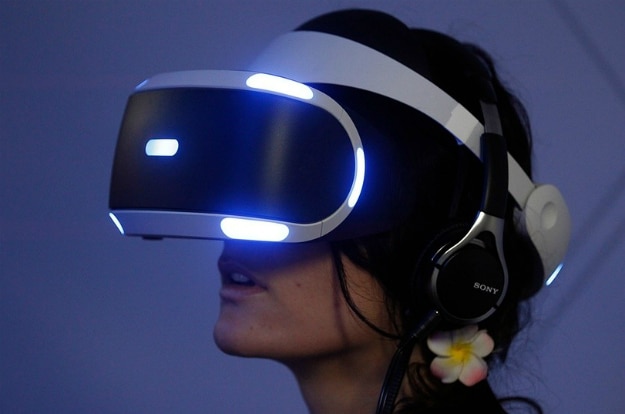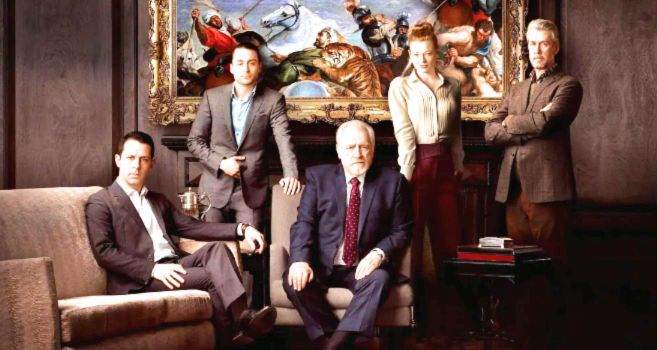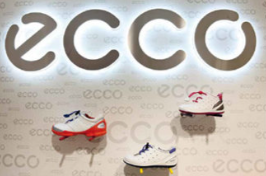A. Tristian
“Wimbledon oh Wimbledon, thy pageantries are as archaic as thy soul”.
Novak Djokovic, Roger Federer, and Rafael Nadal are widely regarded as some of the greatest players in the history of tennis. These three legends have dominated men’s singles tennis for a significant portion of the time since the beginning of the Open Era in 1968. Djokovic leads with an all-time record of 23 Grand Slam titles, followed by Nadal with 22 and Federer with 20. Until 2002, Pete Sampras of the United States held the record with 14 major singles titles. This year Wimbledon in the men’s final, what at stake is Roger Federer’s eight Guinness Book of Record Wimbledon titles, in which five of them consecutive wins. On the second day of the Championships, the Swiss was invited and celebrated at the Centre Court in the presence of HRH Princess of Wales, Kate Middleton. As the defending Champion, had Djokovic won this year’s title, he too would’ve been on par. As it stands now, along with Pete Sampras he holds seven Wimbledon titles with four consecutive, followed by Bjorn Borg at five, then John McEnroe and Boris Becker each at three.
Wimbledon, which held its first event in 1877, has evolved from a garden-collective tournament to a prestigious Grand Slam event that captivates millions of people around the world. As the only major tournament played on grass, it attracts around 500,000 visitors during the two-week competition. Wimbledon continues to uphold long-standing traditions, including a strict all-white dress code for competitors, the ballot, the eating of strawberries and cream, pimms, preppy attire, and the royal patronage. In recent years, the tradition of queuing for tickets has also become popular. Winning a Grand Slam is prestigious, but winning Wimbledon elevates a player’s status to global recognition. Such important on the CV that the fast grass surface at Wimbledon often challenges players, both juniors and experienced professionals, as they strive to perform their best.
The All England Lawn Tennis Club, the organiser of Wimbledon, is renowned for its exceptional organisation of world-quality, suspenseful matches that create excitement and emotional connections. The tournament’s popularity is evident in the record-breaking viewership numbers. According to the BBC, this year’s Wimbledon witnessed a significant increase in viewership numbers, with 54.3 million streams on the BBC’s iPlayer and BBC Sport online, compared to 53.8 million in 2022. The men’s singles final between Novak Djokovic and Carlos Alcaraz achieved a peak audience of 11.3 million on BBC One, the highest since Andy Murray’s victory in 2016. The match was also streamed live 4.1 million times on BBC iPlayer and BBC Sport online, marking a 58% increase from the previous year. The women’s singles final between Marketa Vondrousova and Tunisia’s Ons Jabeur also experienced a surge in viewership, with a peak audience of 4.5 million on BBC One and 1.3 million streams on BBC iPlayer, an 85% increase from 2022. Overall, 25.6 million people watched Wimbledon on BBC TV. The tournament showcased star-studded matches in both the men’s and women’s draws, captivating fans and spectators with high-quality and entertaining tennis. The same is also true for the period of the two weeks building up to one of the first most top-ranked players into the second week both in gentlemen’s and ladies where six top seeded gents and five top seeded ladies moved on to the quarter finals. And it doesn’t stop there. As what would be considered by some as the draws of a lifetime, fans and spectators were treated with some of the most explosive and thrilling matches that produces shots, slices as well as slips and fines of the year. Rublev against Djokovic, Sinner vs Saffiulin, Alcaraz played childhood sparring partner Rune, and Medvedev vs American Eubanks. In the ladies, Vondrousova against Pegula, number one Swiatek vs Ukraine’s Svitolina, defending champion Rybakina vs Jabeur, and Keys vs number two Sabalenka. The women’s battle reached to the final of an unseeded Czech Vondrousova well-deserved win against last year’s runner-up Jabeur who also played some of her best tennis beating opponents above her rank en route to the final. A highly-unexpected result that silenced Centre Court for a split second, before the crowd broke into celebratory roar of claps, acceptance and appreciation of the finesse displays from both players. Also worth mentioning, Brits very own Neil Skupsi won the men’s double with long time partner Koolhof. Defending women’s double Strycova and Shieh get to keep their title, whilst mixed double Pavic and Kichenok won the final.
The gentlemen’s final between world’s rank 1 and rank 2 was the one that was most anticipated by purist and neutralist of the tennis world. Djokovic, having been considered the King of Grass since mid 2010, plays not only to defend the title but also to tie a record held by a single person. The fact that he won both this year’s Australia and French Open trophies not only gave him the confident boost, but a firm determination to deliver and win. He has campaigned this through his sublime performances of the highest number of unbeatable matches across all ATP players, and the tennis world agreed. Djokovic was still the favourite up until a few hours before the matches started when Watson – the Wimbledon’s AI – corrected its prediction to favour Alcaraz. Some factors affecting this would’ve been the last several matches where Alcaraz won all in straight sets whilst Djokovic delivered the last three in 4-4-3 sets consecutively. Considering these were only a few matches coming up towards the D day – high-precision predictive analytic stats would use at least 12 or 4 months data the least – the weighing or parameters used to calculate the prediction on this occasion might’ve also been considerably adjusted. Popularity level, online – offline sentiment analysis, players attitude, as well as level of audible crowd support during a player’s match, perhaps are deemed to be more crucial than ever in deciding the Champion, which to be honest, not your everyday winner.
Punters and enthusiasts alike took notes as to how this year’s Championships have slightly evolved. First the queue. This year, AELTC decided not to sell tickets online on the basis that it should be the only Slam where all tickets, aside from Debentures, can be purchased on the day. Online sales of returned ballot tickets ended a few months prior. It gives opportunity to a wider audience on the spot, and higher probability to those who may be restricted in the digital and or eCommerce savviness department. A wonderful initiative to democratise the sport that has long been perceived belonging to a certain class only. The first few-day queue bottleneck due to extra security level and minor protesting was accepted as a no big deal for the people on the ground. They cherished the tradition more than anything else. The average queuing time for the first week before getting on the ground is between 5 to 7 hours. There were some suggestions for year to come that there should be a percentage of main courts’ tickets sold online, while the opportunity of queuing can still be held. Or, instead of being handed queue cards, those queuing can use an app feature i.e. QR code to get in, and in order to cut down the amount of queuing time drastically. Some argues that tradition should certainly be cherished and upheld but the best top-rated business is one that can execute and service customers in the most efficient and effective manner, i.e UX (user experience) friendly. Balancing tradition with efficient customer service and user experience remains a topic of debate.
Second, the raucous main courts. As tennis becoming a much popular sport worldwide, gone are the days when golf-clapping is the only way to express and appreciate the world’s top tennis Gladiators in action, fight and steal each other’s points. This year, tennis fans prove that they too can be expressive in these prestigious, usually code & behaviour-restricted, well-reserved arenas as if they were watching any other sports, whilst openly if not fanatically support their favourite players. Hats off to the players on the opposite side of the cheering, it should take steely determination and a showcase of creative moves to shrug off the one-sided cheers and focus still on their games. It would be interesting to analyse this new Wimbledon’s crowd trend as it certainly creates much more thrill, excitement and buzz to the matches played. Could it be a repressed expression exploded from the somewhat six hour all torrential-proof queue? Or the queue-only mechanism brings similar type of supporters and not diverse enough to support variety of players?
The rivalry between Djokovic and Alcaraz, which now has become official, culminated last September when the latter achieved ranking number one for the first time. Since then both took turns being the highest top player in the pro tennis circle, with Djokovic dominating the most after his back-to-back Slam wins at Australia and French Opens. Came grass season in June, Alcaraz played and won the Cinch Queens club tournament establishing his no 1 position again whilst around the same time Djokovic got invites to play in the more intimate Giorgio Armani Classic at the Hurlingham private member’s Club.
Carlos Alcatraz, dubbed the boy wonder, has made fantastic progress since turning pro at the tender age of 16, making him a force to be reckoned as the most promising tennis player since the big four. He entered 2021 below top 100 but already inside the top 50 after his US Open campaign. He is known for his aggressive and fiery playing style. Although his idol growing up was fellow countryman Rafael Nadal, he and Djokovic share similar style that involves powerful baseline shots and an ability to approach the net. He admits that he copied Djokovic in order to win the Ultimate Championships prize, and let mobility and stamina decide the fate of the match instead. And it did work wonder from the third games in the second set where Djokovic was probably thinking harder of come up with a plan B to avoid fighting “himself”. He managed on the fourth set but perhaps a little too late as frustration already got the better of him towards the final deciding set. It was rather mesmerising in a surreal way to have watched how the battle unravelled. Djokovic seemed to be out of character certainly in some of the crucial moments, plus he slipped more than a few times. One would initially hope that was just a sardonic and comical way that he often does, showcasing how frail a much older player is and lo and behold, age gap does really – if not super crucially – matter in sport. And not a real fall. As a master of entertaining with jovial character, Djokovic usually thrives on the crowd’s roar when it is on his side. With majority of the Brits’ tennis fans in Centre Court blatantly cheered for the Wonder boy, while he didn’t seem (or want) to manage to brush it off or stay focus in the game. As if he knew and tried hard more to accept that this battle was not his to win, even before it finishes.
Djokovic is no Federer, we can all agree. With almost similar number of prestigious titles and match wins across four slams and end of year finals, at Wimbledon they are somewhat “seen” differently. It is almost a history repeat itself when Bjorn Borg held five titles and Sampras won his seventh, Bjorg was still considered the face of Wimbledon at that time. Perhaps Wimbledon relates more to stylish play and sophisticated technique such Federer possesses, especially for the gentlemen. In the ladies, it was proven that power and determination alone can win the Williams sisters as well Martina Navratilova with her feistiness and wit added to hold the record for 9 consecutive years. The fact that some people think watching Djokovic play is like watching computer games may draw a conclusion that his disciplined and regimented style makes him look like a robot. Or he has become too powerful that people are at odds concerning he is invincible. Plus, his non-conformist stance on Covid vaccination did affect his popularity post 2020. While the boy wonder, with his opponent’s mirror-imaging play, delivered the mission and deservingly crowned as the new champion. With the investment that backs him up and followers that jumped right away into the mainstream to adore him. On paper he should have a promising year across the other slams with the US Open next in line. Will Wimbledon still love him next year if his play is still as raw and only to copycat his opponent? Probably not. But for now, it is not the time for a robot to be as equal as human and be rewarded the ultimate Guinness book of record.










